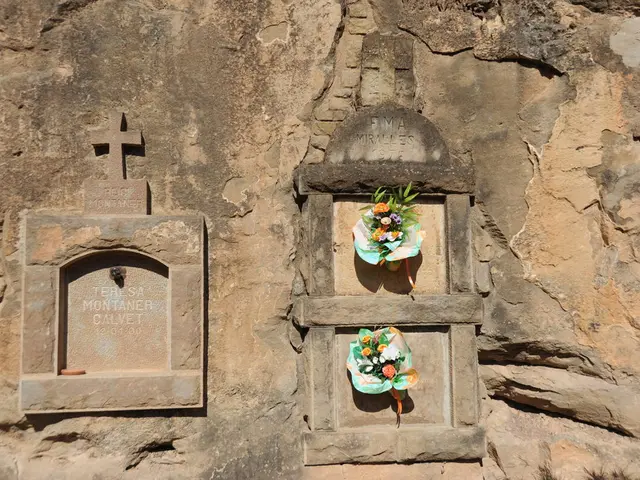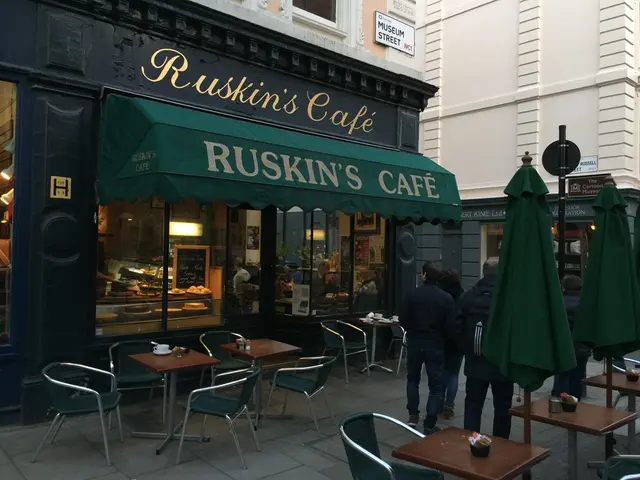Kazakhstan Embraces Hungarian Heritage through Inaugural Matyó Exhibition
Vibrant Matyó Embroidery Unveiled in Almaty Museum
Stepping into the Almaty Museum, Kazakhstan, you'll find yourself immersed in the vibrant world of Matyó embroidery - a captivating symbol of Hungarian folklore, recently added to UNESCO's Intangible Cultural Heritage list.
This extraordinary exhibit features over 100 authentic items, including intricately embroidered textiles, traditional clothing elements, household items, and rare archival photos that offer a glance into everyday Hungarian life. Contributions come from the Matyó Museum in Mezőkövesd, Hungary, and generous private collectors. The exhibition's dazzling colors, intricate designs, and dedicated embroidery techniques showcase both artistic mastery and a rich cultural heritage passed down through generations.
Altynzhan Khozhamuratova, head of the International Relations Department at the Almaty Museum, explains that the exhibition is a testament to inter-museum cooperation, following a reciprocal exhibit from the Museum of the History of Almaty presented at the Museum of Art-Center "Karcag Kinche" in Karcag, where it generated considerable interest.
She shared, "Our Association of Museums in Almaty brings together several institutions and offers visitors a unique opportunity to delve into the history and culture of our city. Along with our exhibits in ethnography, archaeology, and history, we partner closely with international museums, like our exhibitions in Prague in 2024 and the artifacts from Seoul displayed in our gallery for two months."
Embroidered Tales
Matyó embroidery and folk dress have played a vital role in preserving and enhancing the cultural heritage of Mezőkövesd. As Hungarian folk art thrived in the 19th century with factory-produced fabrics, embroidered garments became regional symbols reflecting social status, age, and ceremonial occasions.
Khozhamuratova remarked, "Matyó festive wear, adorned with free-form embroidery, is one of the most eye-catching elements of Hungarian costume culture."
Origins and Evolution
Matyó embroidery is one of the oldest traditional embroidery styles in Hungary, with roots in the work of local artisans who developed distinctive patterns while observing community design conventions. The intriguing legend suggests Matyó embroidery began during the Ottoman period when a young woman saved her beloved from captivity by crafting an apron filled with roses in the middle of winter.
Embroidered aprons played a crucial role in courtship and marriage traditions. It was customary for brides and grooms to prepare at least seven aprons for their dowry, using embroidered pieces in symbolic exchanges between couples. Over time, these embroidered pieces came to hold additional cultural meaning, even soothing crying infants.
Beyond Decoration
Matyó embroidery evolved into three main categories. The earliest featured simple rosettes and birds in red and red-blue thread on bedding. Over time, the designs grew more expressive and colorful, using wool and silk, with each color carrying a distinct meaning - red for joy, yellow for the sun, blue for sorrow, and green for mourning. After the First World War, green embroidered waves on aprons commemorated those lost in battle.
Men's shirts also evolved from basic patterns to richly embroidered designs, integrating lace and ribbon. A third focus was on aprons, especially for young unmarried individuals, decorated with large roses - five to seven for boys and nine for girls - embroidered in vibrant colors.
Young Hungarians, much like their counterparts in Kazakhstan, take interest in preserving their traditions. They strive to understand the deeper philosophy and worldview behind the Matyó embroidery, just as our Kazakh youth explore modern Kazakhstan's history and culture.
"Every object in this exhibit tells a story. Like our own national patterns, embroidery carries not just beauty but philosophy, passed down through generations," Khozhamuratova concluded.
The exhibition, a collaborative effort between the Association of Museums of Almaty and the Consulate General of Hungary in Almaty, runs at the Almaty Museum until July 16.
- The travel schedule of the Almaty Museum includes upcoming exhibitions in Prague in 2024 and artifacts from Seoul displayed for two months, demonstrating their commitment to cultural-travel and international cooperation.
- Fashion-and-beauty enthusiasts will find the Almaty Museum exhibit, 'Embroidered Tales', a fascinating journey into the lifestyle and tradition of Matyó embroidery, showcasing its evolution from simple rosettes to expressive and colorful designs.








